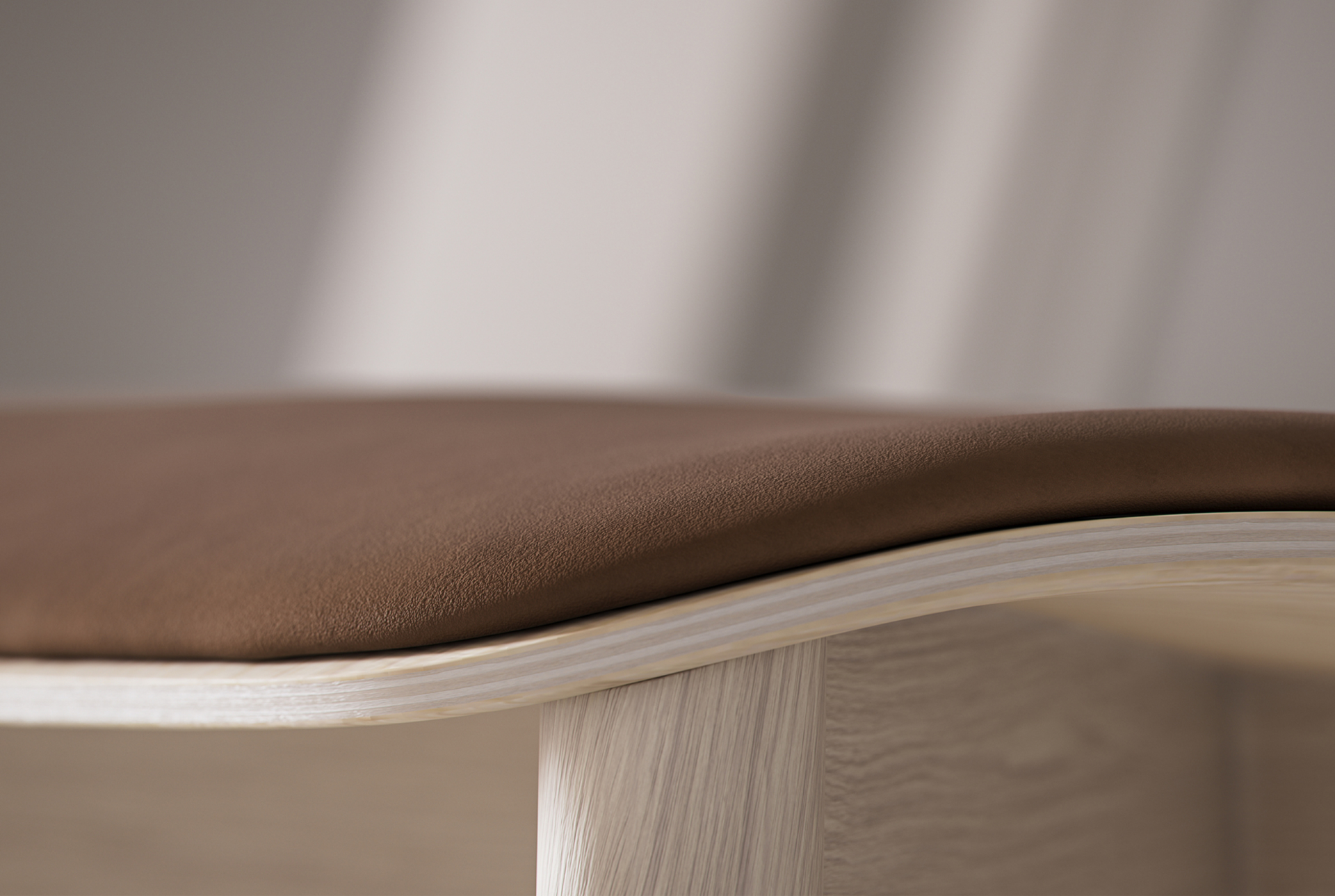
What shapes Scandinavian design?
Scandinavian design often brings to mind clean lines, natural materials and clear functionality. But it’s also about creating furniture that lasts – both practically and visually. For EFG, these are core principles that inform everything from the choice of materials to how our products interact with their environment.

With an understated yet complex design, Evo blends naturally into the space. Soft lines and natural wood meet modern innovation in its 3D-knitted upholstery.
Pared-back forms in harmony with the space
Unlike many other design traditions, the Scandinavian aesthetic is free from superfluous ornamentation. Instead, it’s shaped by a pared-back expression, often enhanced by industrially produced details like repetitive, organic forms – a legacy of Scandinavia’s early industrialisation. But Scandinavian design isn’t just about visual appeal. A piece of furniture must serve a clear purpose and suit its environment, both functionally and visually. That’s why there’s a strong balance between use, function and quality, where the furniture is designed for the room it’s placed in.

Wood and organic lines give Zoe an honest and harmonious character. Zoe’s back is constructed without visible screws, allowing for discreet connections between the components.
Wood enhances the expression
Scandinavia is a region with similar natural resources, and historically, access to wood has been relatively even – something that’s contributed to a unified design language where the choice of material is often just as important as the shape itself. Wood is appreciated not only for its functionality and durability, but also for the warmth and character it brings to a piece. Rather than covering the wood with paint or stain, its natural features like grain, variation and texture are highlighted. It reflects both material honesty and a sense of pride in the craft.
Design that lasts over time
Longevity has always been part of the Scandinavian design tradition – even though the reasons behind it have changed over time. Historically, furniture was built to last for generations, for both economic reasons and out of respect for natural resources. Today, sustainability is an essential part of the Scandinavian design process and a driving force behind innovation. As awareness around climate impact and circular solutions grows, the need to repair, update and adapt furniture over time is more important than ever.

Bow contrasts modern design with Scandinavian simplicity, where organic shapes and wood meet tubular steel and visible screws.
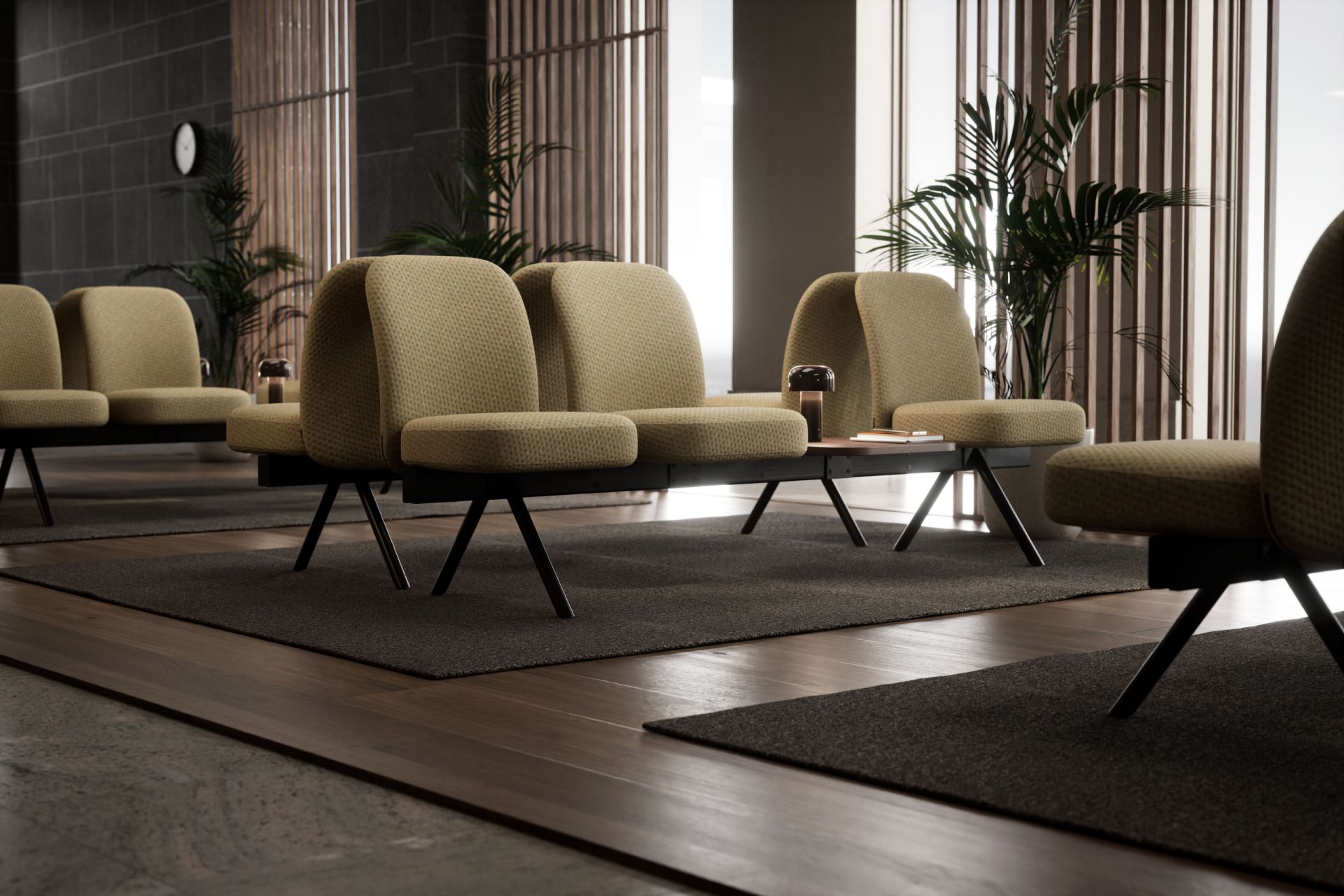
With a wide choice of fabrics and a layer-by-layer construction that allows for on-site reupholstery, Appoint offers real flexibility in both form and function.
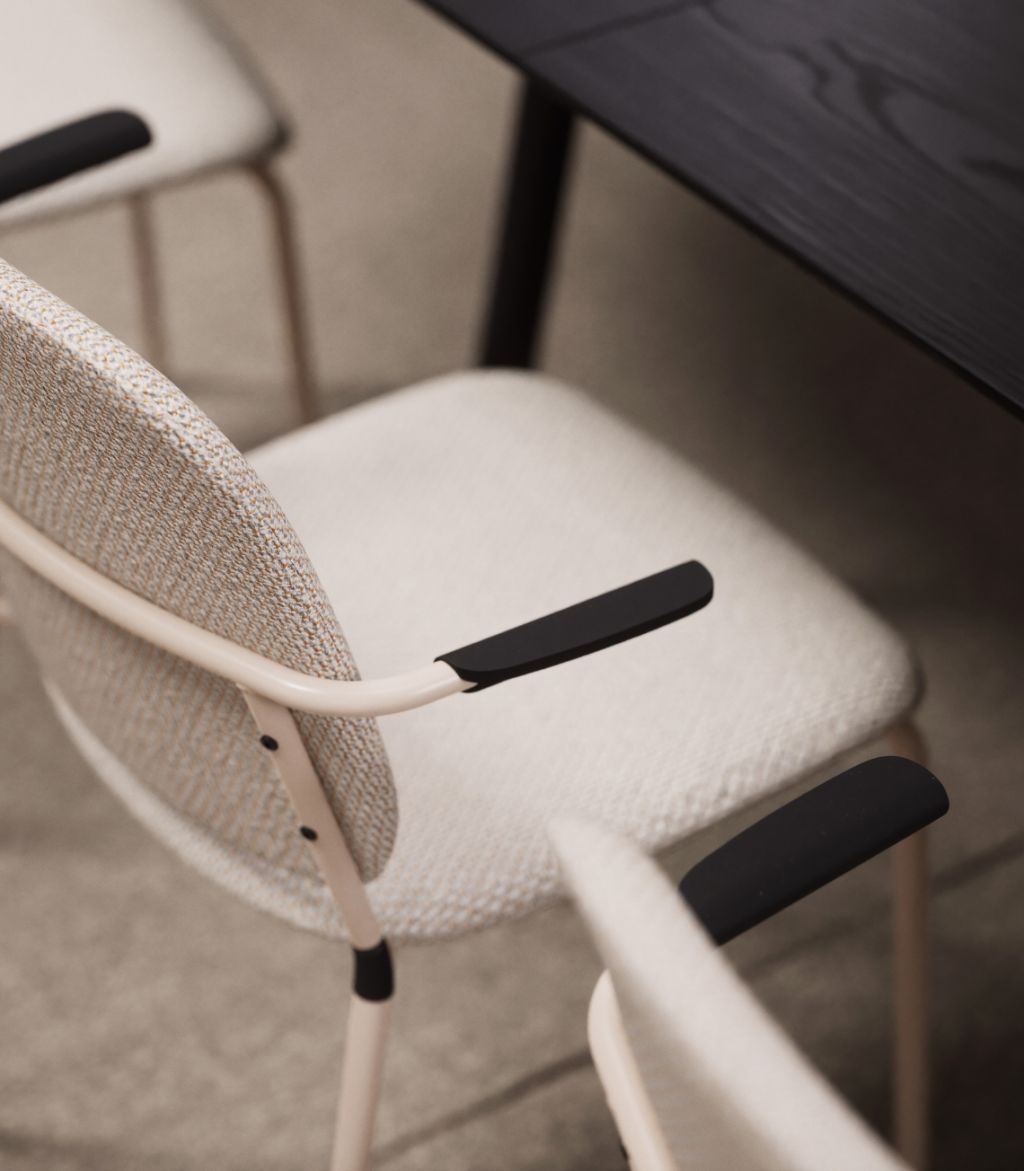
Rooted in Scandinavian design
EFG has a long tradition of designing interiors that are a natural part of the space. Starting from the user’s needs, we create furniture with a clear purpose – to function in its context, support the environment it’s placed in, and facilitate the work being done there. A chair isn’t just an object next to a table – it’s part of a larger whole with a specific role in a specific setting.
A circular construction reveals every detail, making it part of Bow’s unique and honest character.


Collaborate pairs well with a variety of chairs and is designed to be updated over time when needs evolve.
Soft, sculptural lines and a wooden beam add an inviting warmth and character to Appoint.
In our design process, we continually strive to maintain flexibility within the space. That’s why each piece can easily be customised with a choice of finishes, upholstery and colours. Maintaining the flexibility over time is equally important. At the same time, designing for timelessness can be challenging – after all, we can’t predict how future needs or expressions will evolve.
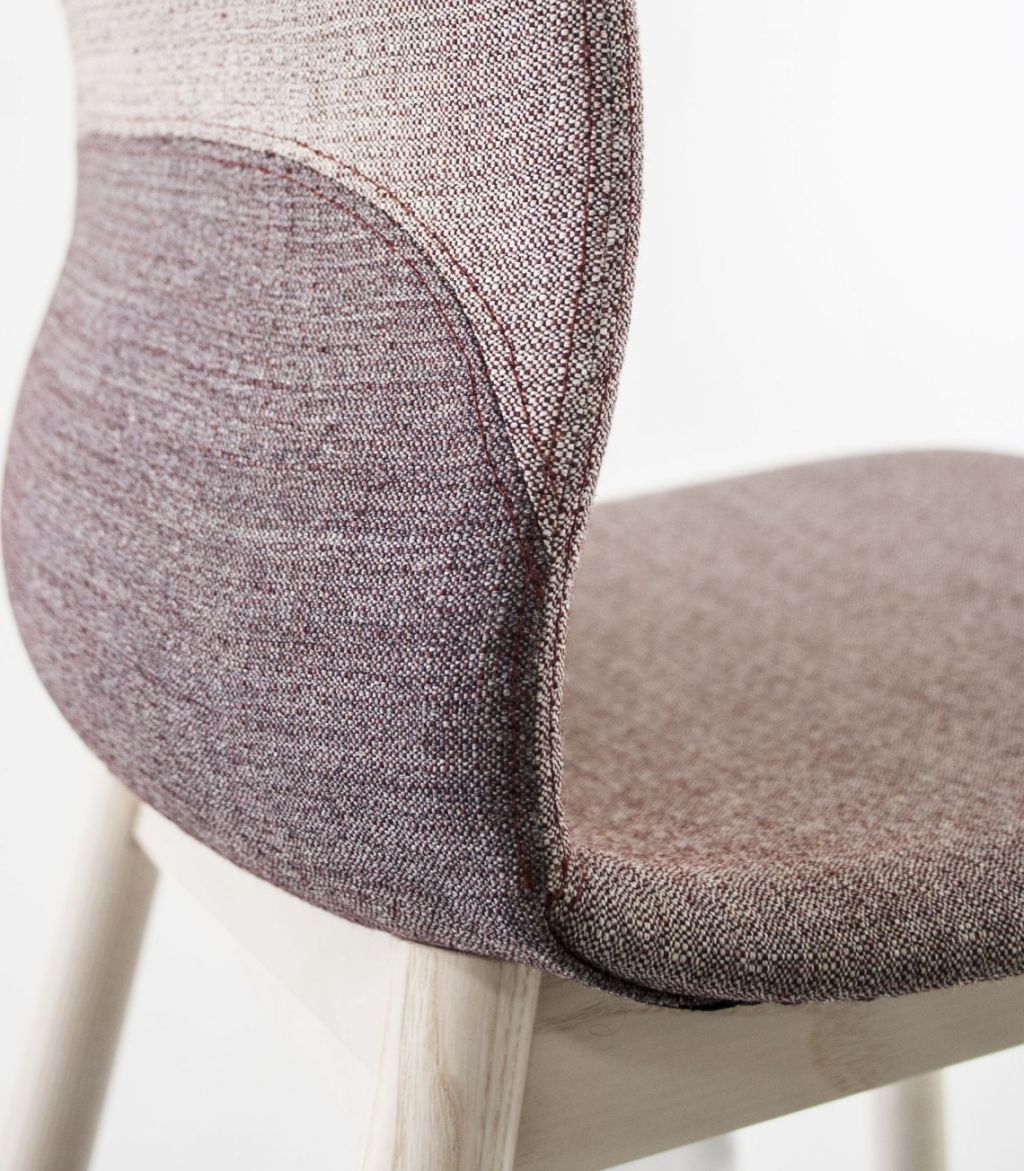
With its arched backrest, Archie is designed to interact with its surroundings.
Often, it’s the design details that signal the strongest identity that end up feeling outdated first. With EFG’s layer-by-layer design, these elements can easily be replaced over time. Seat height, legs, fabric or other components can be updated, allowing the product to live on with a new expression or function without losing its original value. This is not only a sustainable approach, but also one that reflects the Scandinavian design philosophy: thoughtful, long-lasting solutions where function, materials and environment work in harmony.
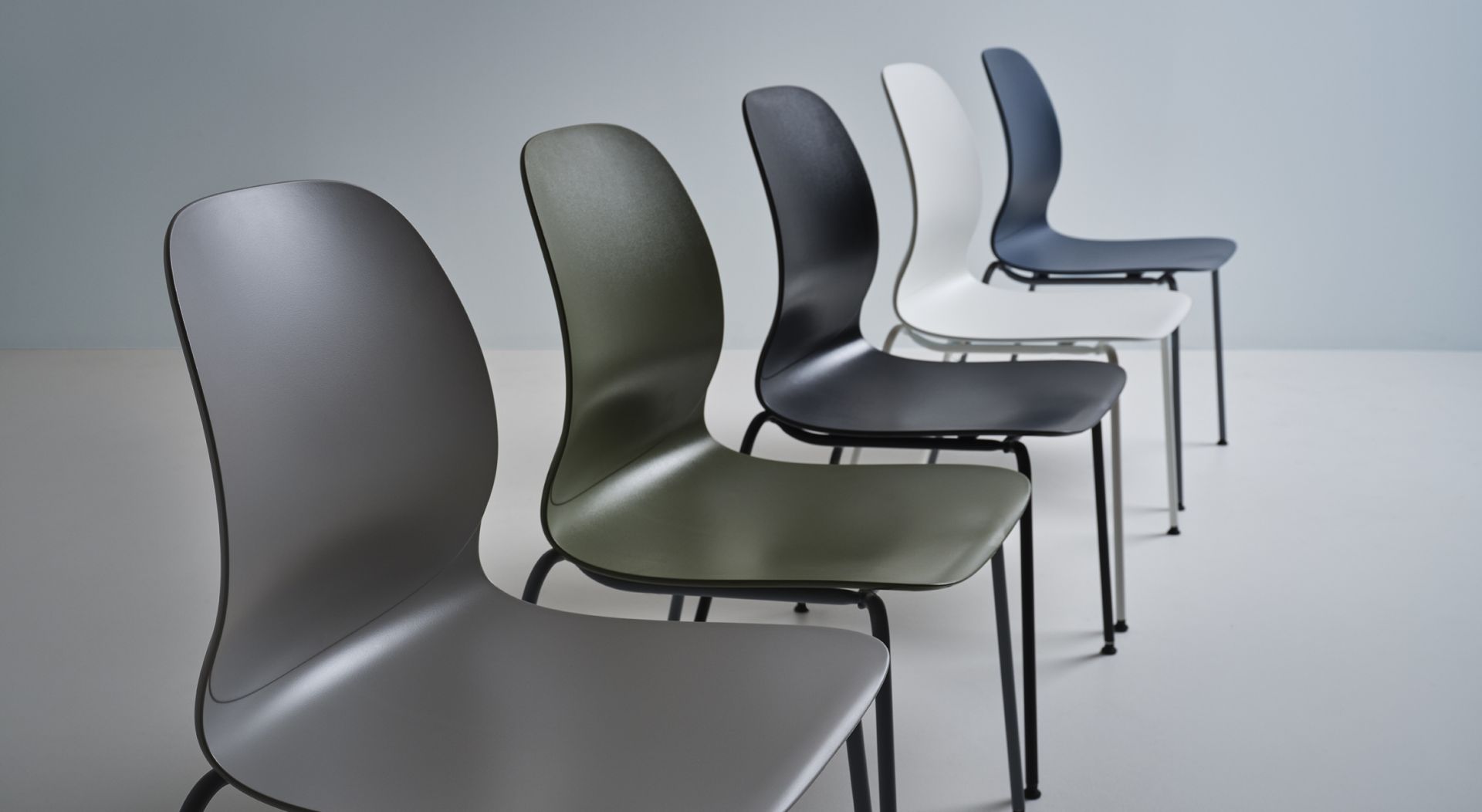
Archie combines comfort, adaptability and simplicity in an organic design that fits into almost any space.